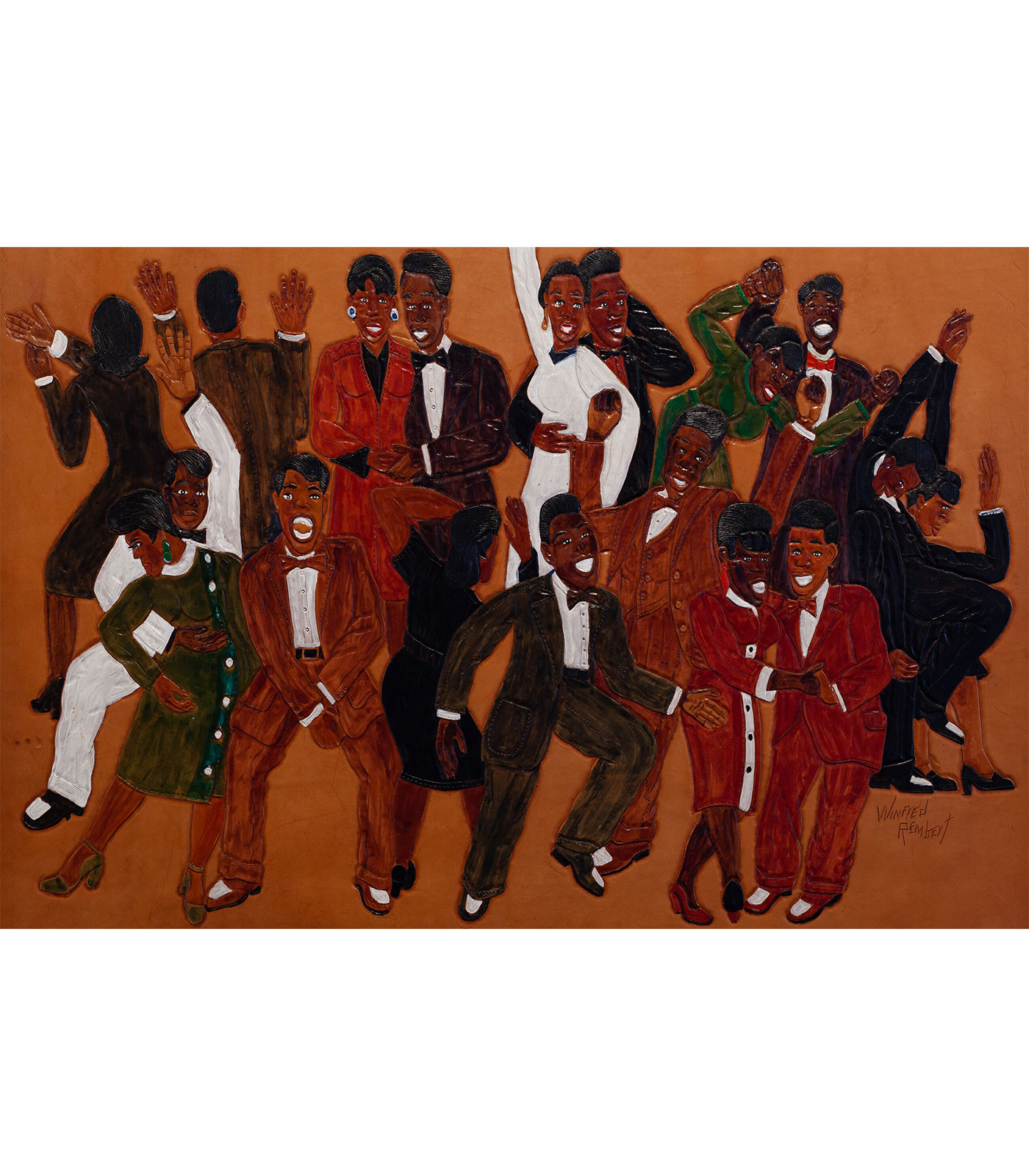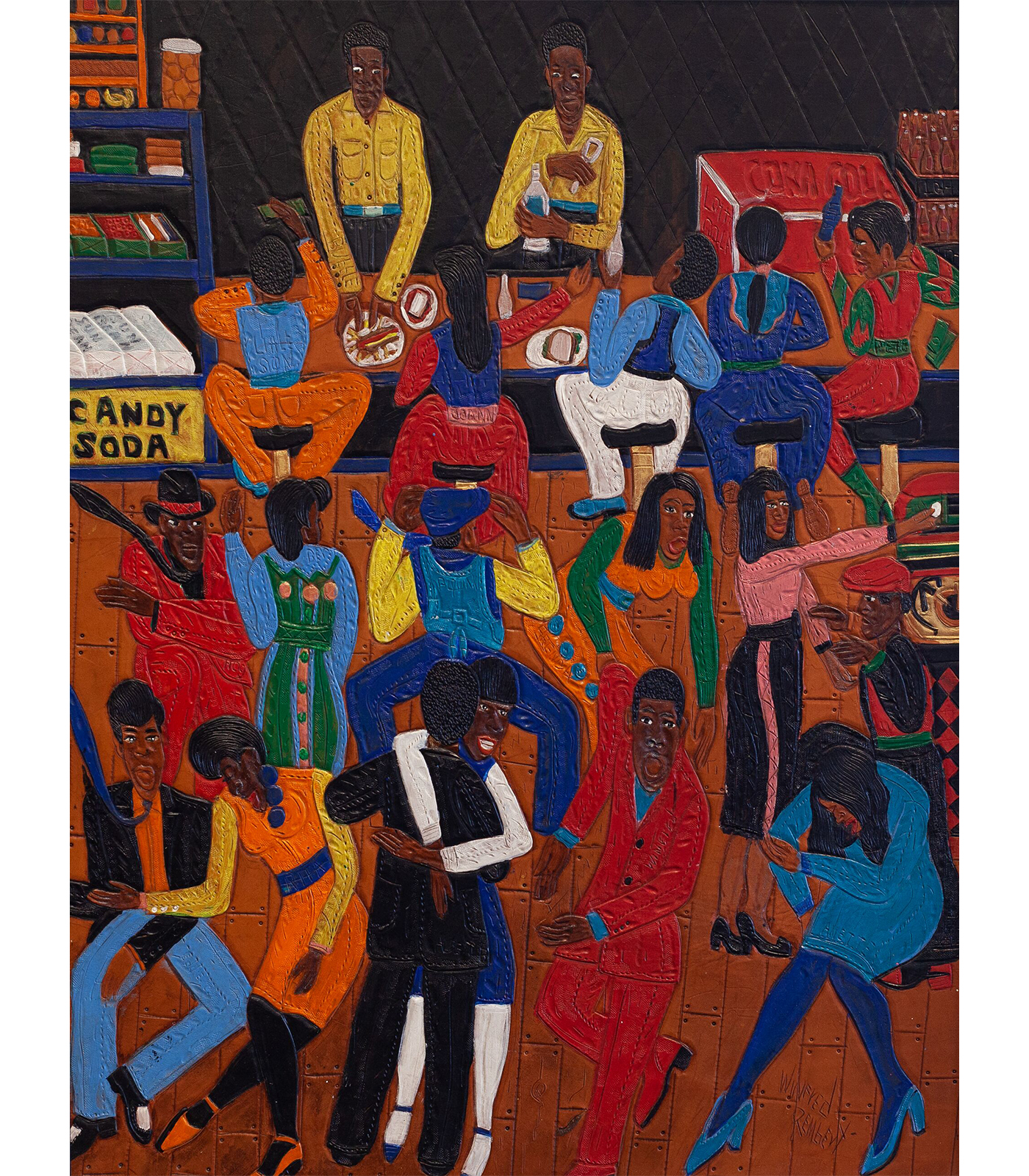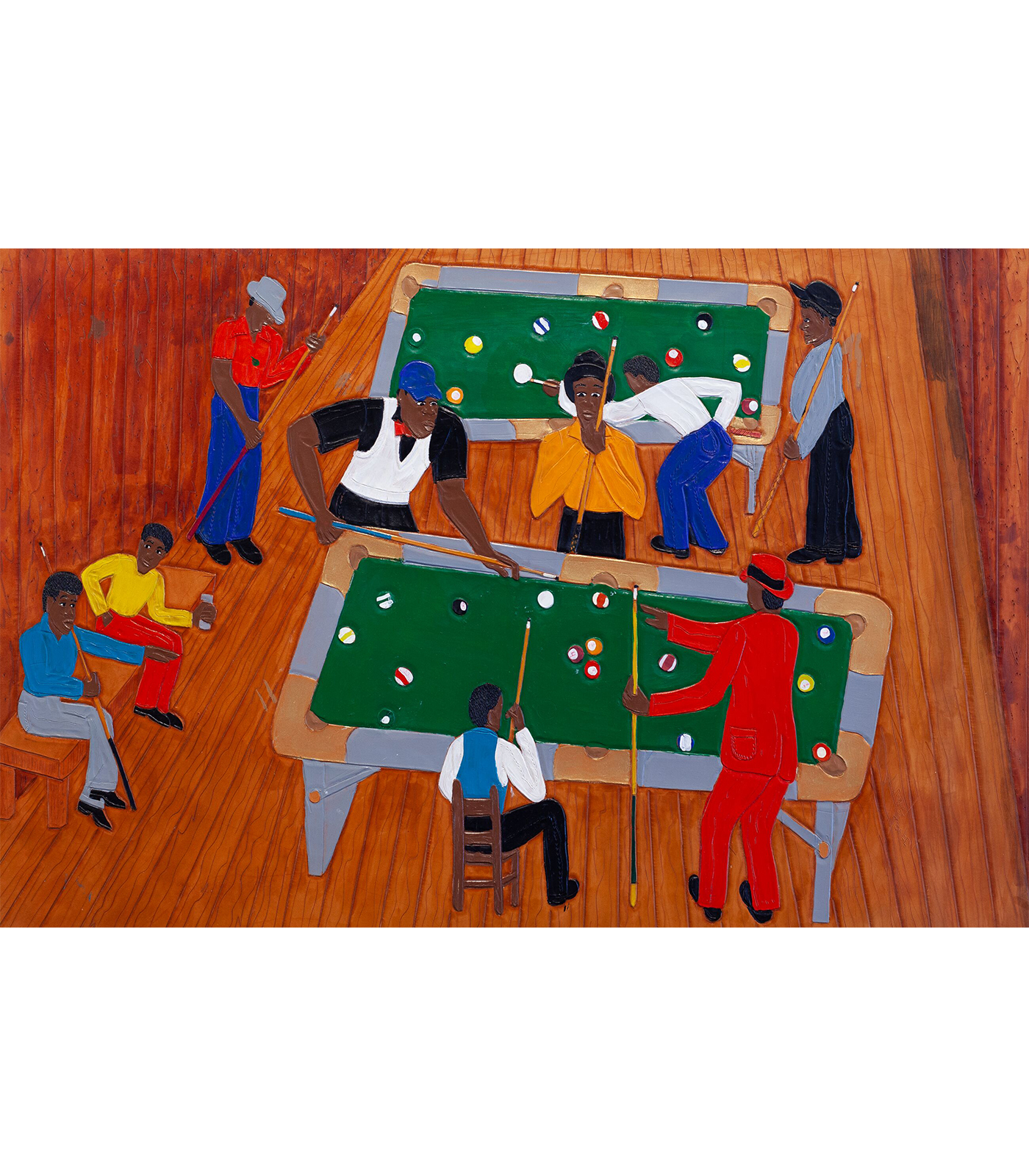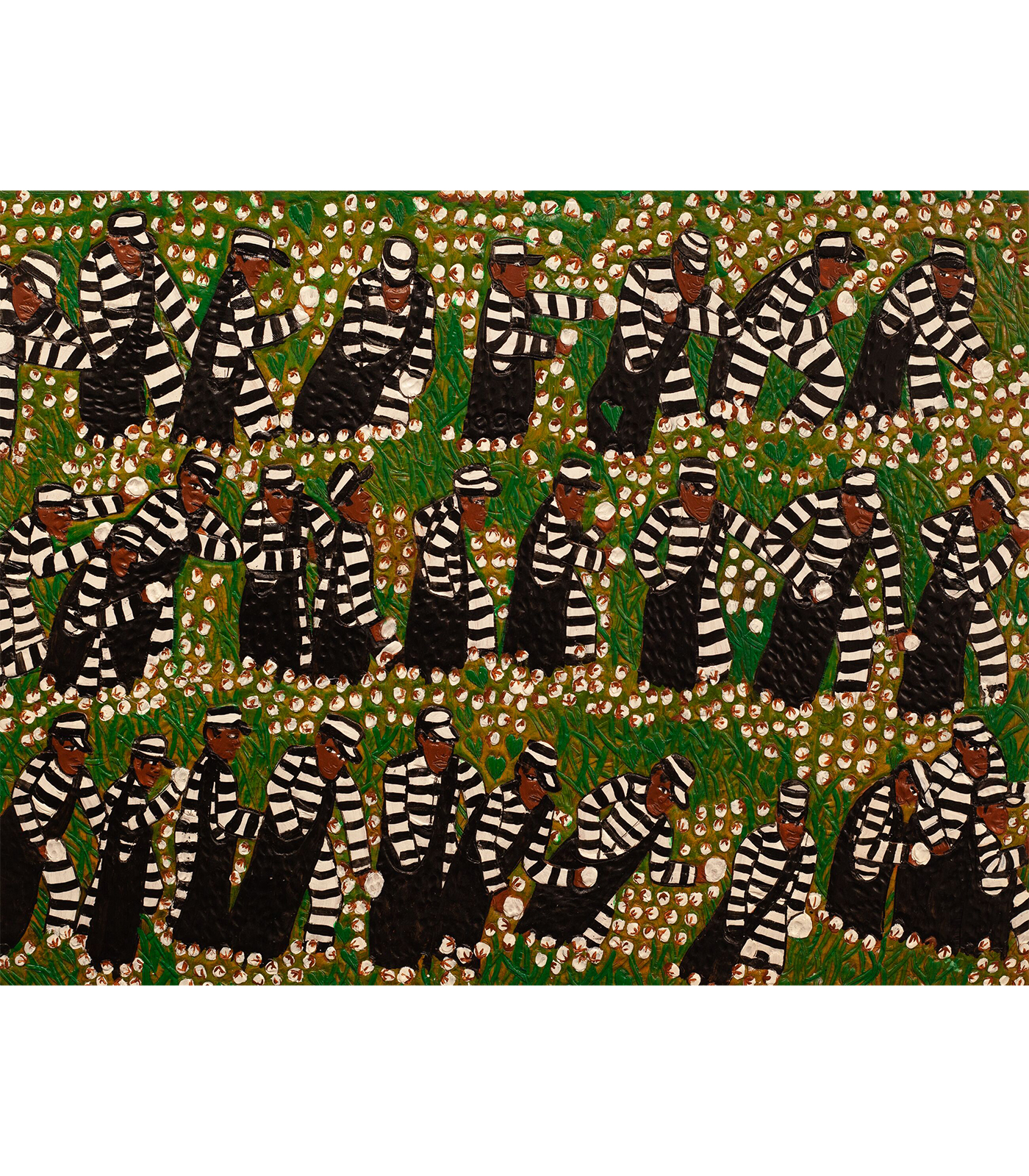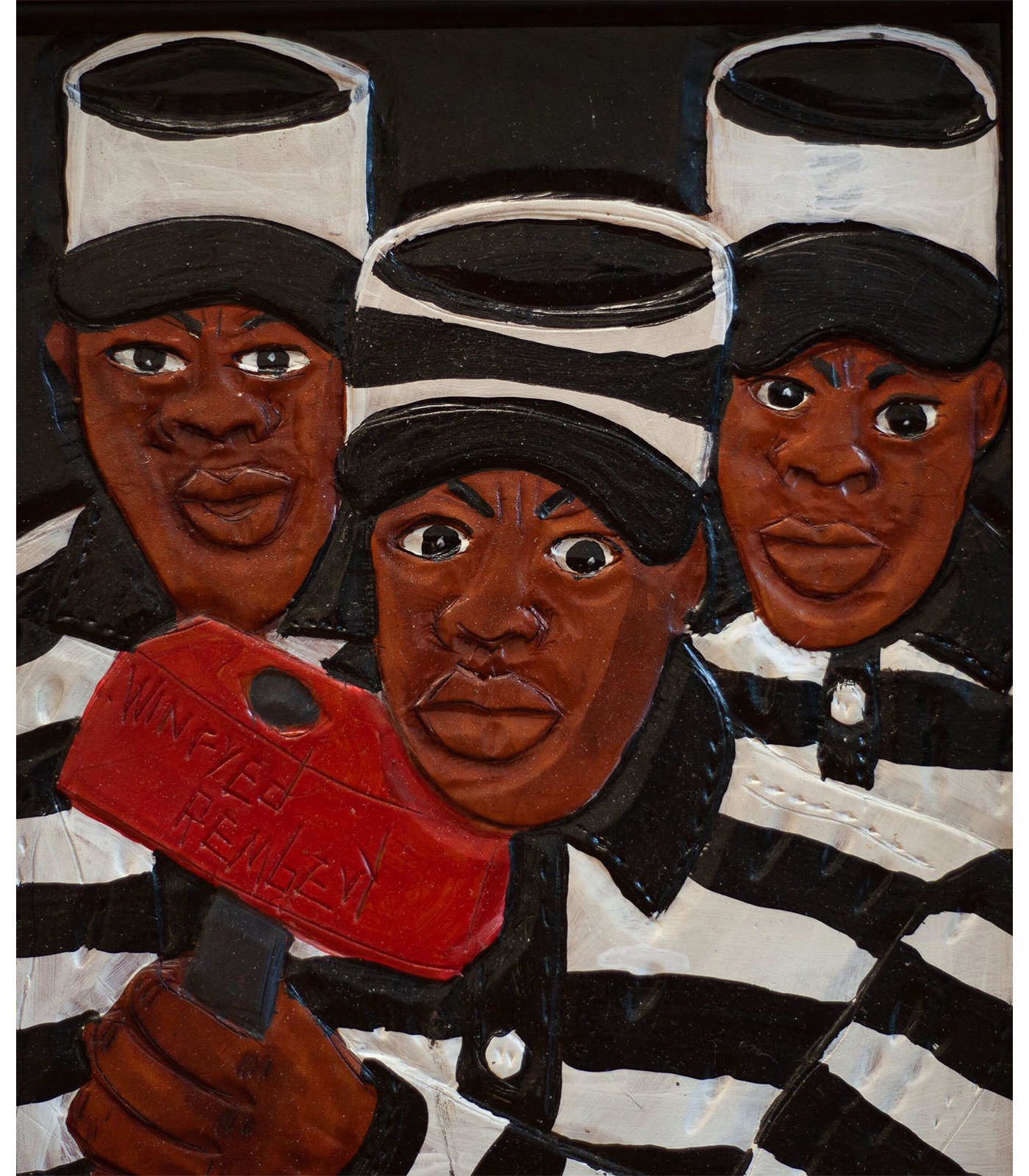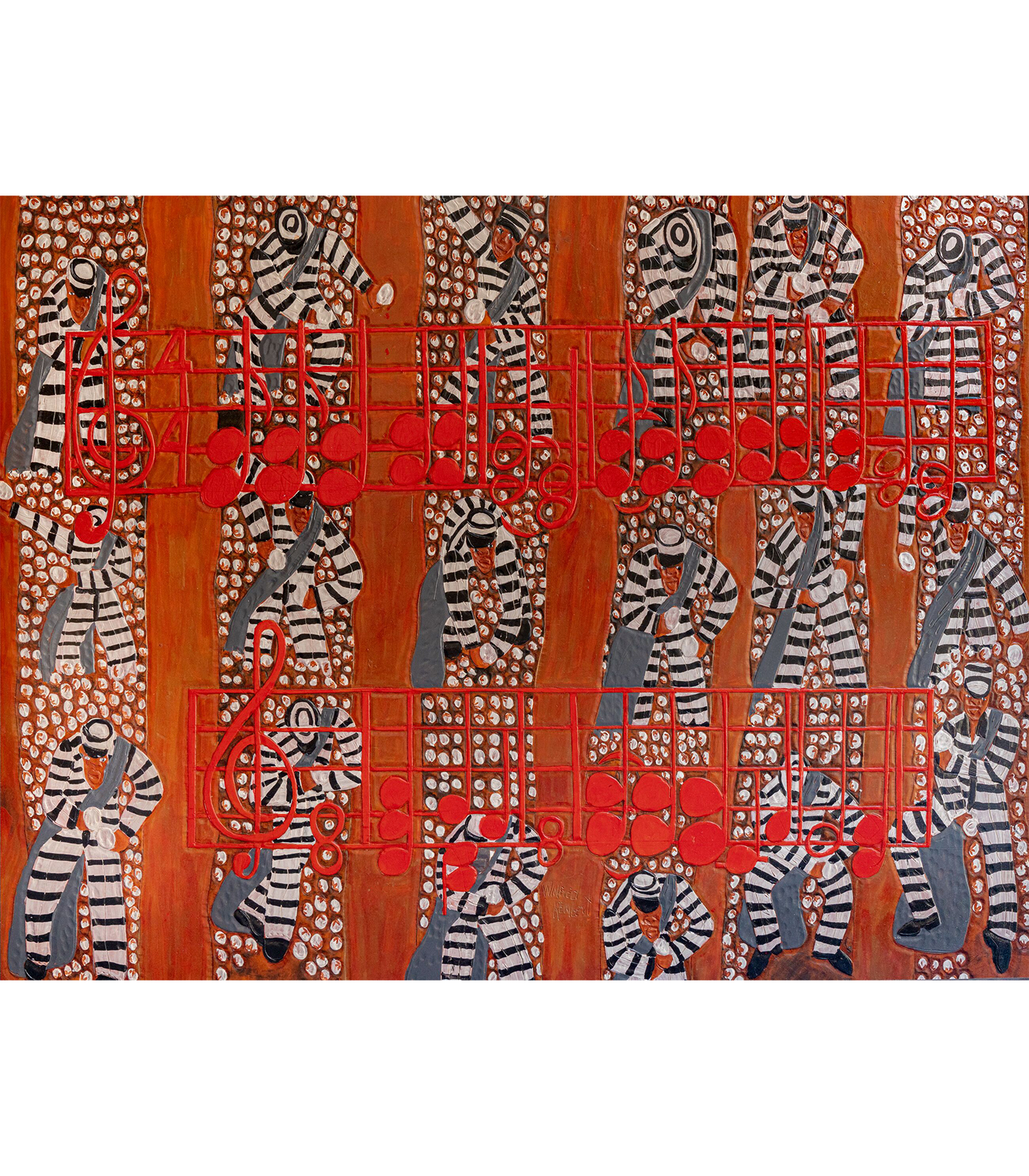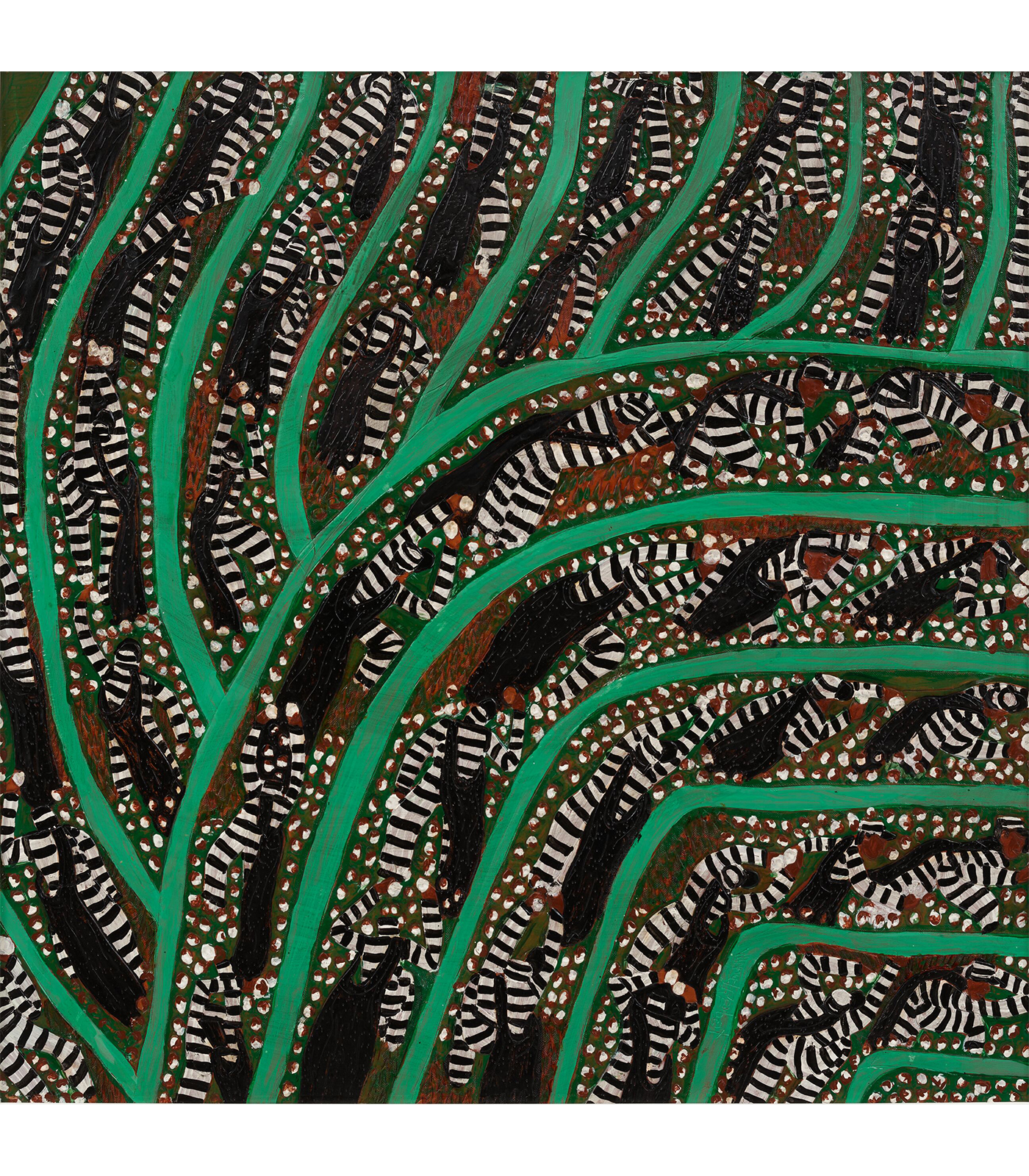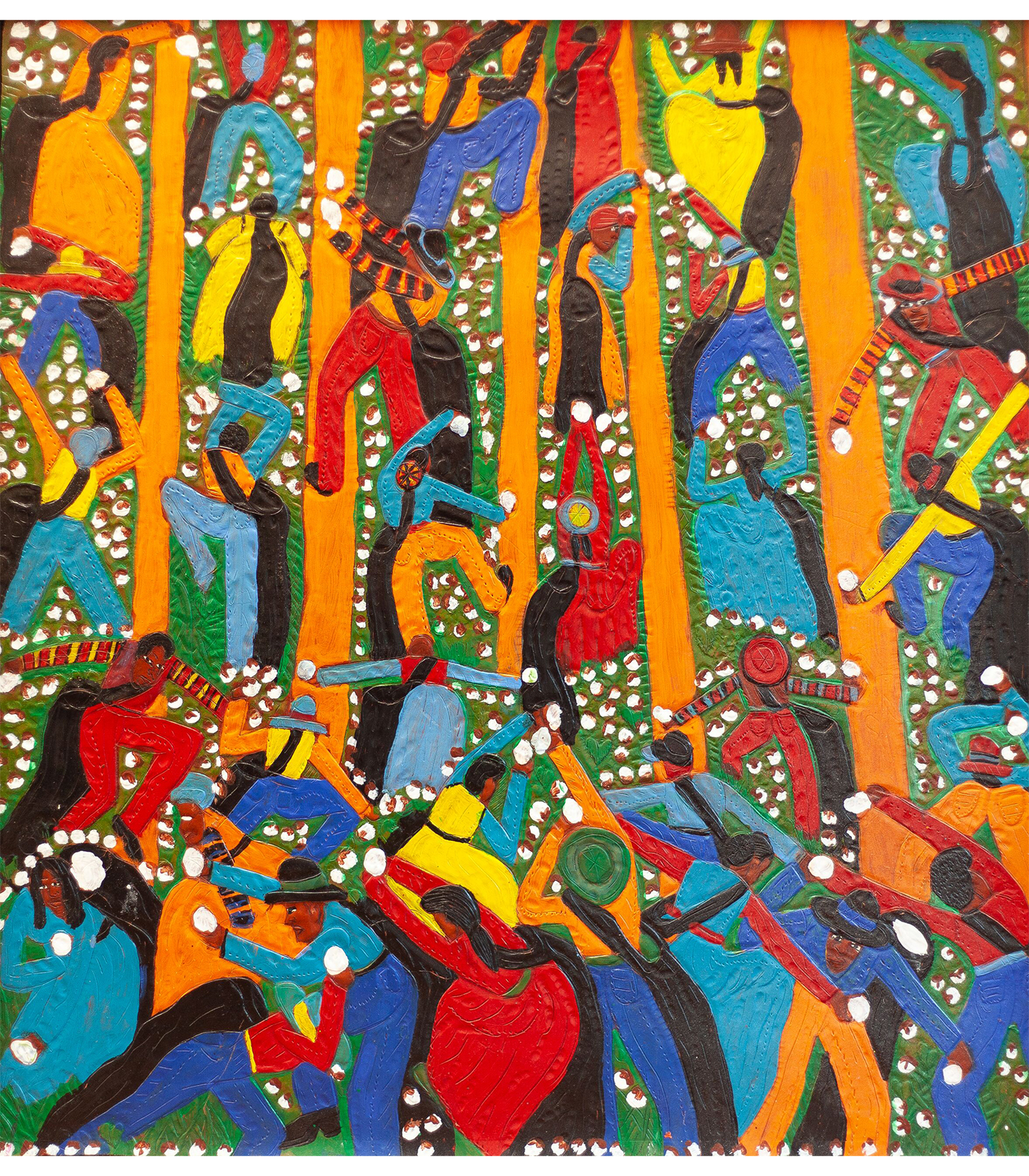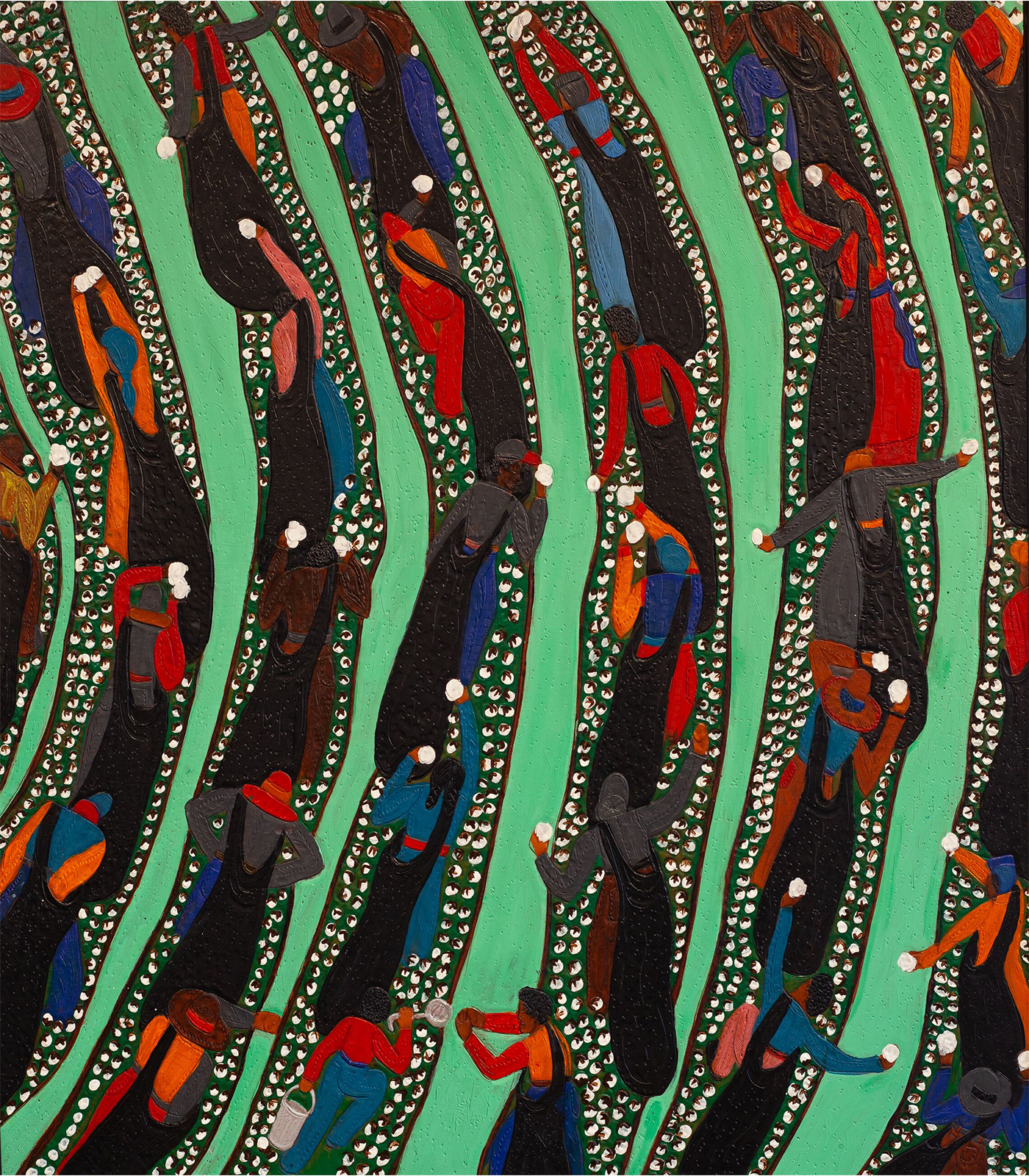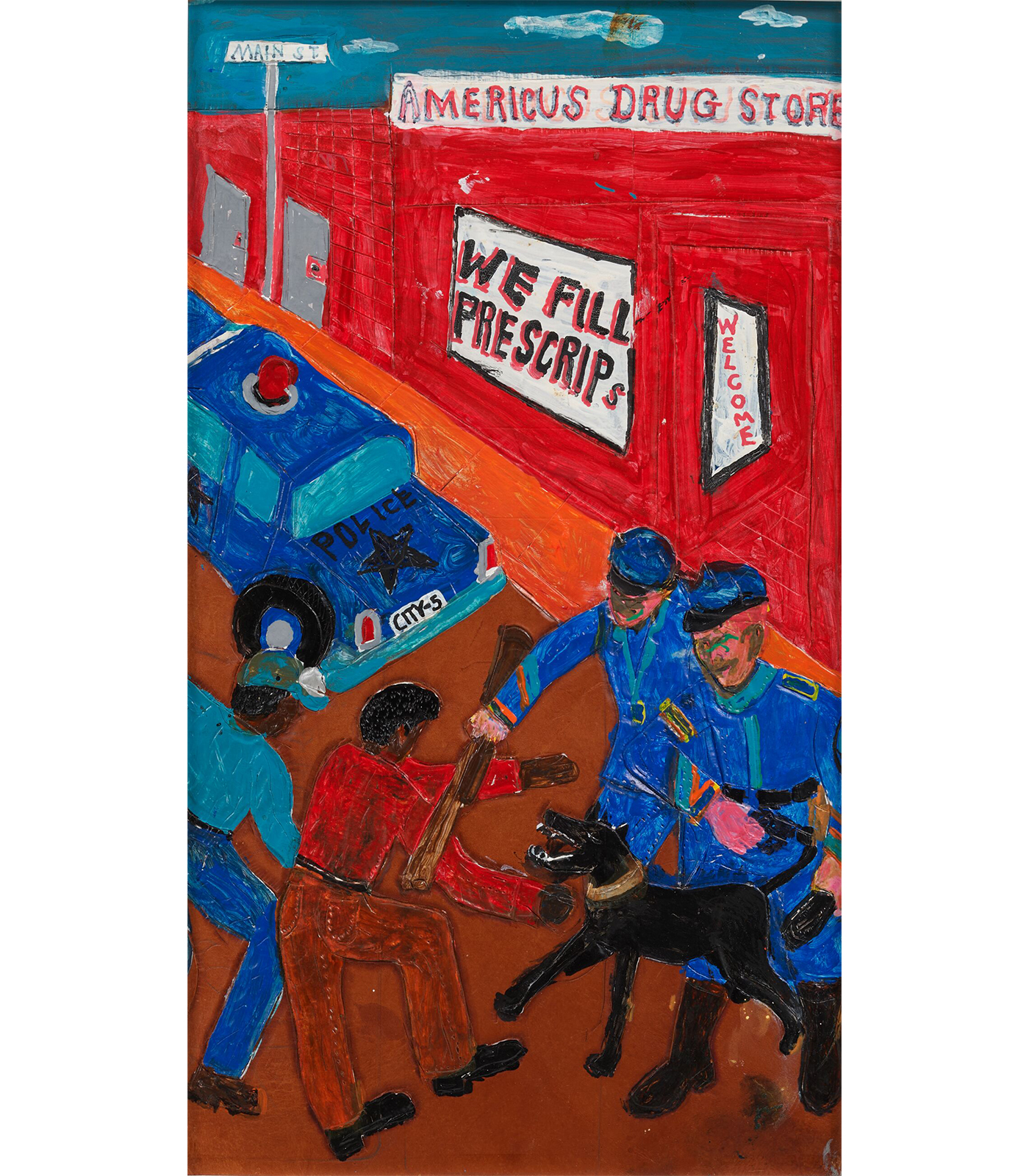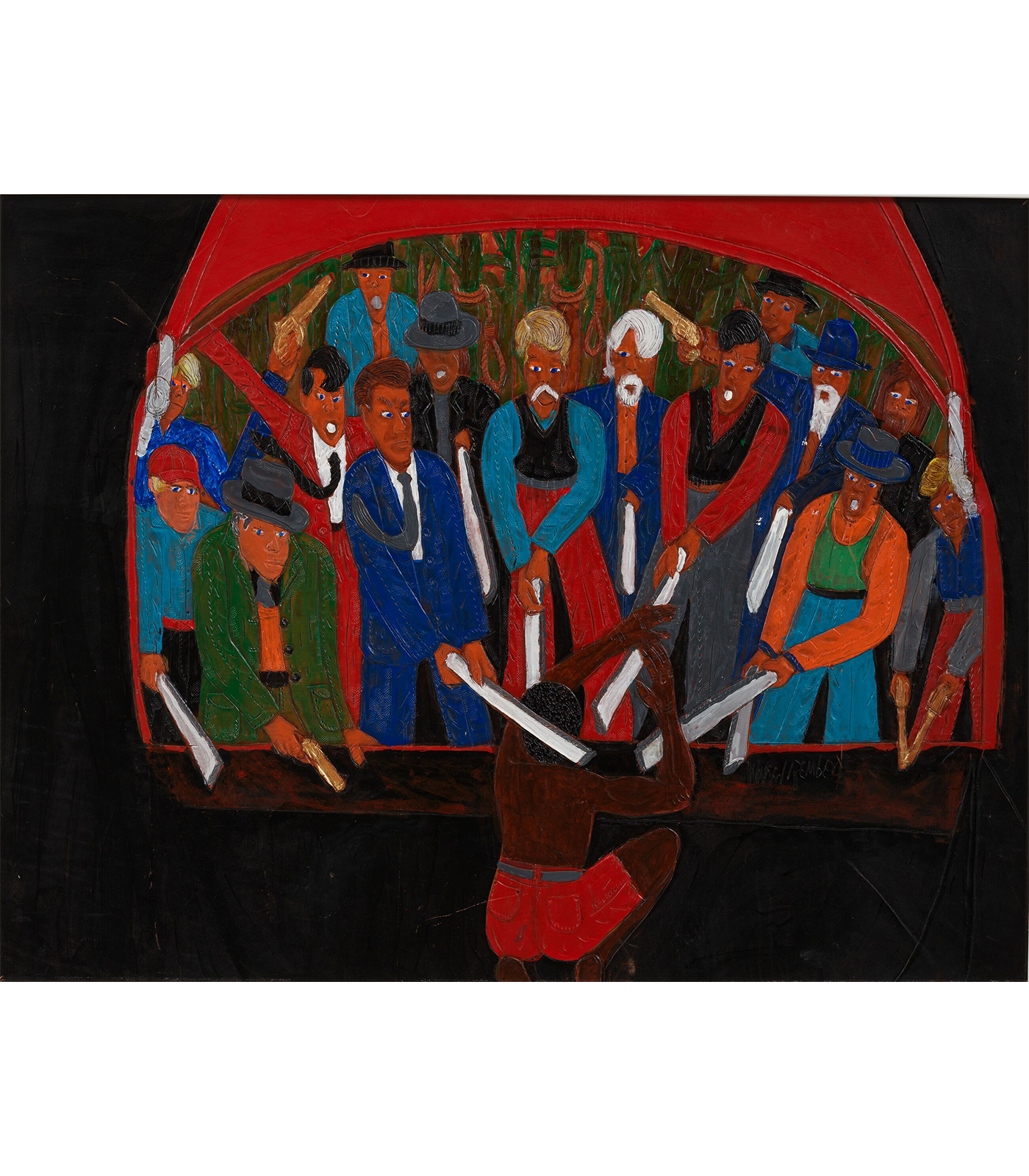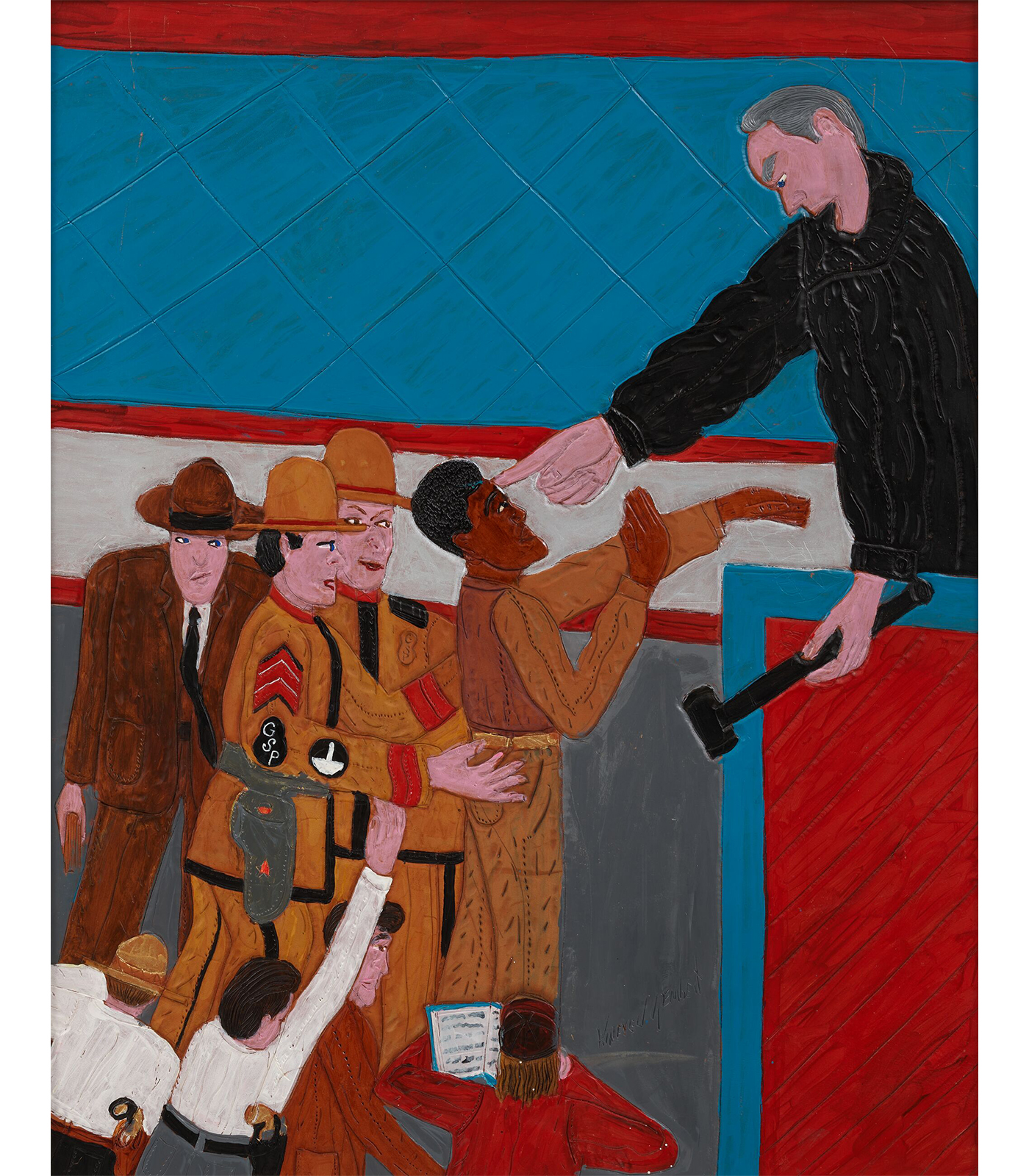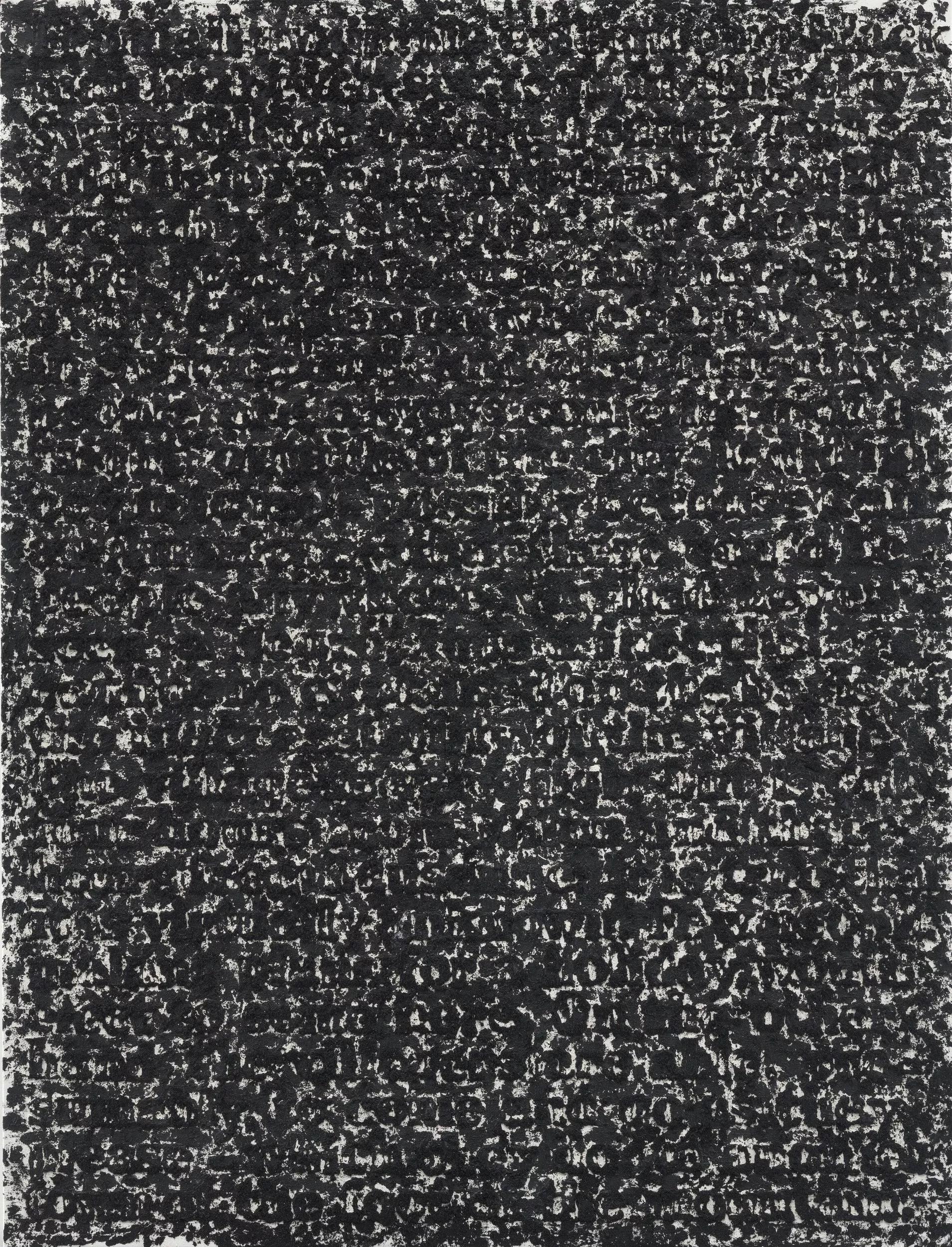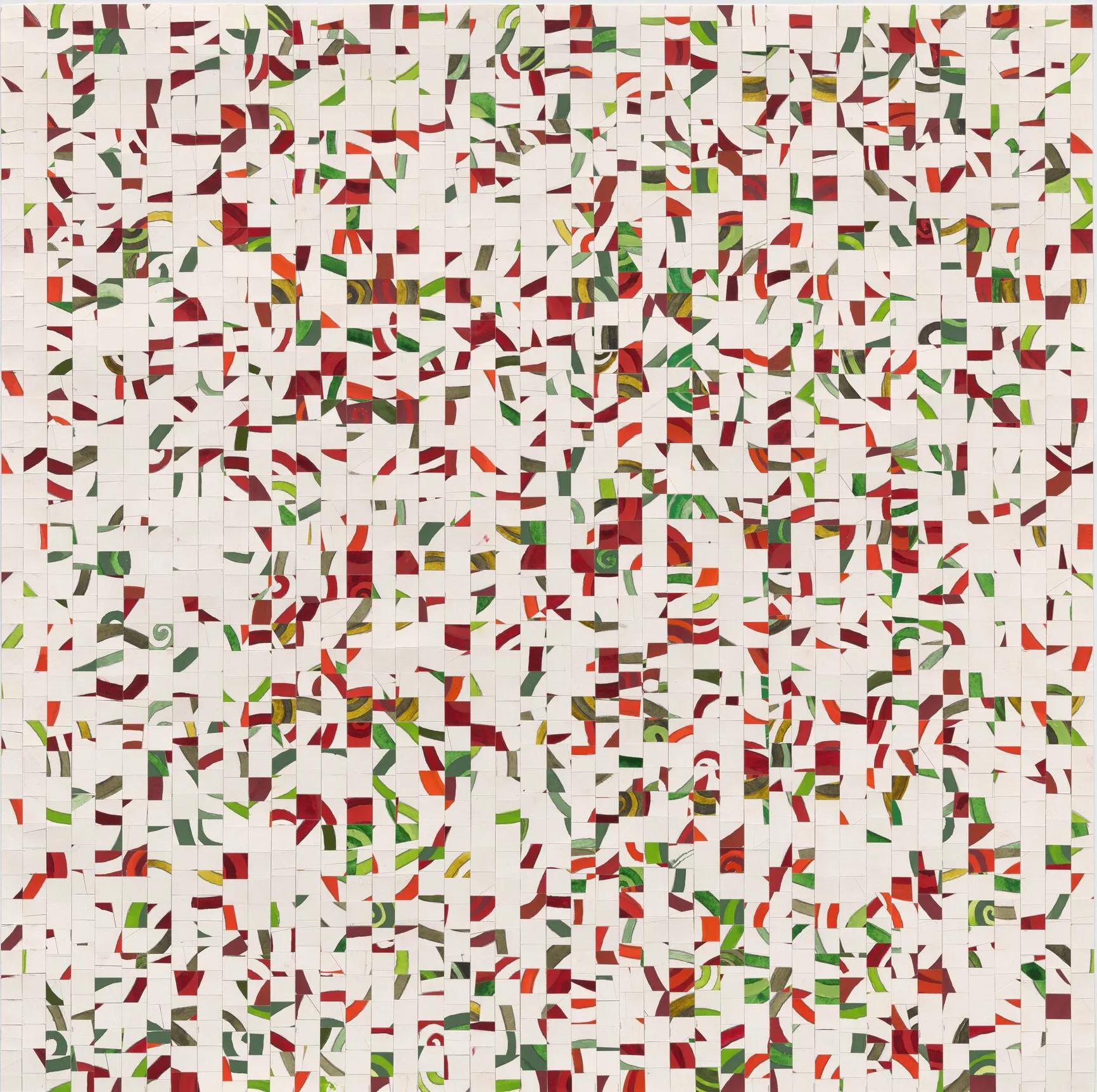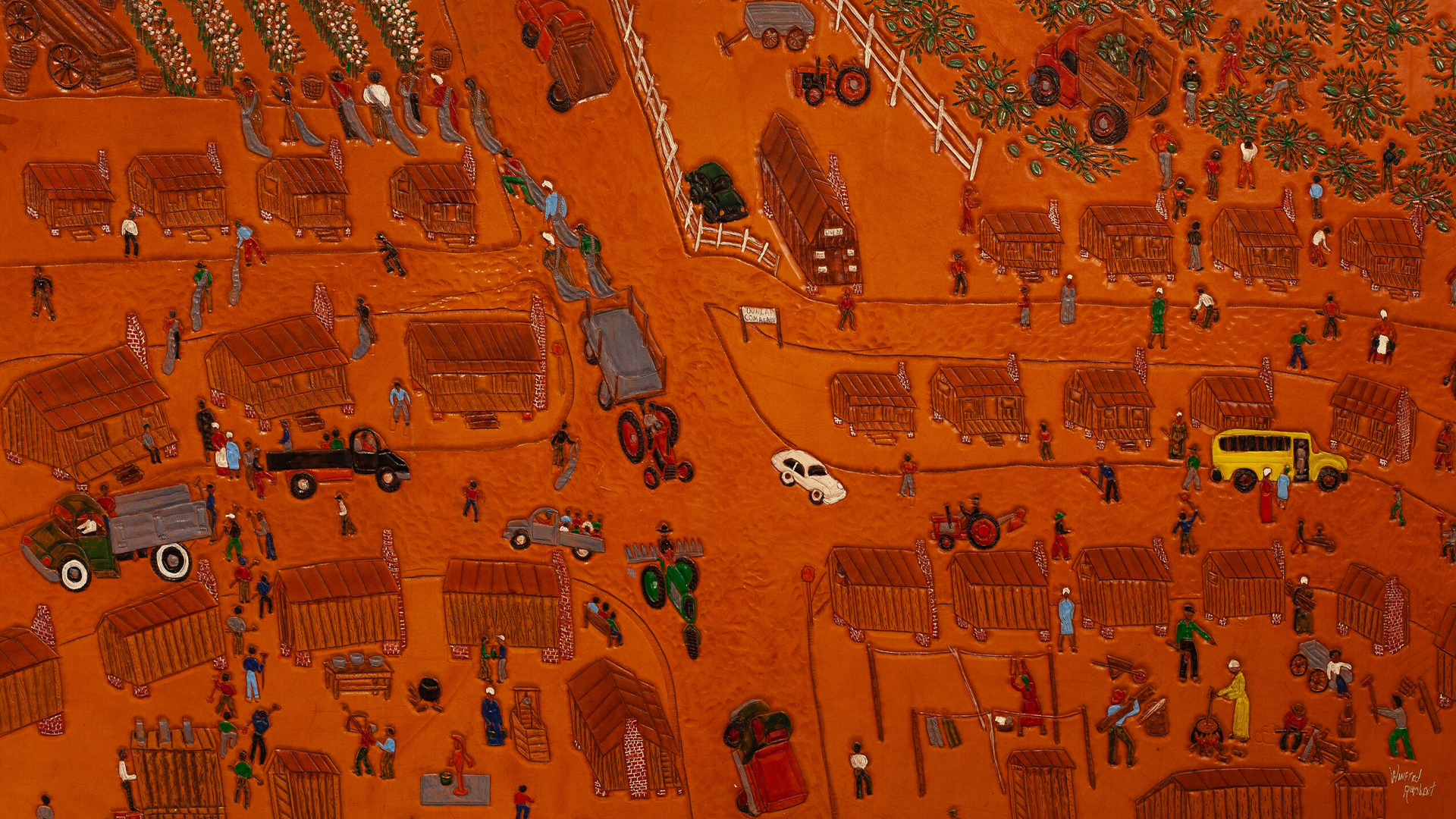
Winfred Rembert
All of Me
23 February – 22 April 2023
New York, 69th Street
Hauser & Wirth presents ‘All of Me,’ its first exhibition of works by late American artist Winfred Rembert (1945-2021), in collaboration with Fort Gansevoort. Occupying all three floors of the gallery’s 69th Street location, this immersive tribute to Rembert’s incredible life and artistry includes more than 40 works made in his signature medium of carved, tooled and painted leather, including several never before seen. Produced during the last three decades of his life, the objects on view offer a striking visual memoir and will take visitors on a journey through key chapters of the artist’s personal history.
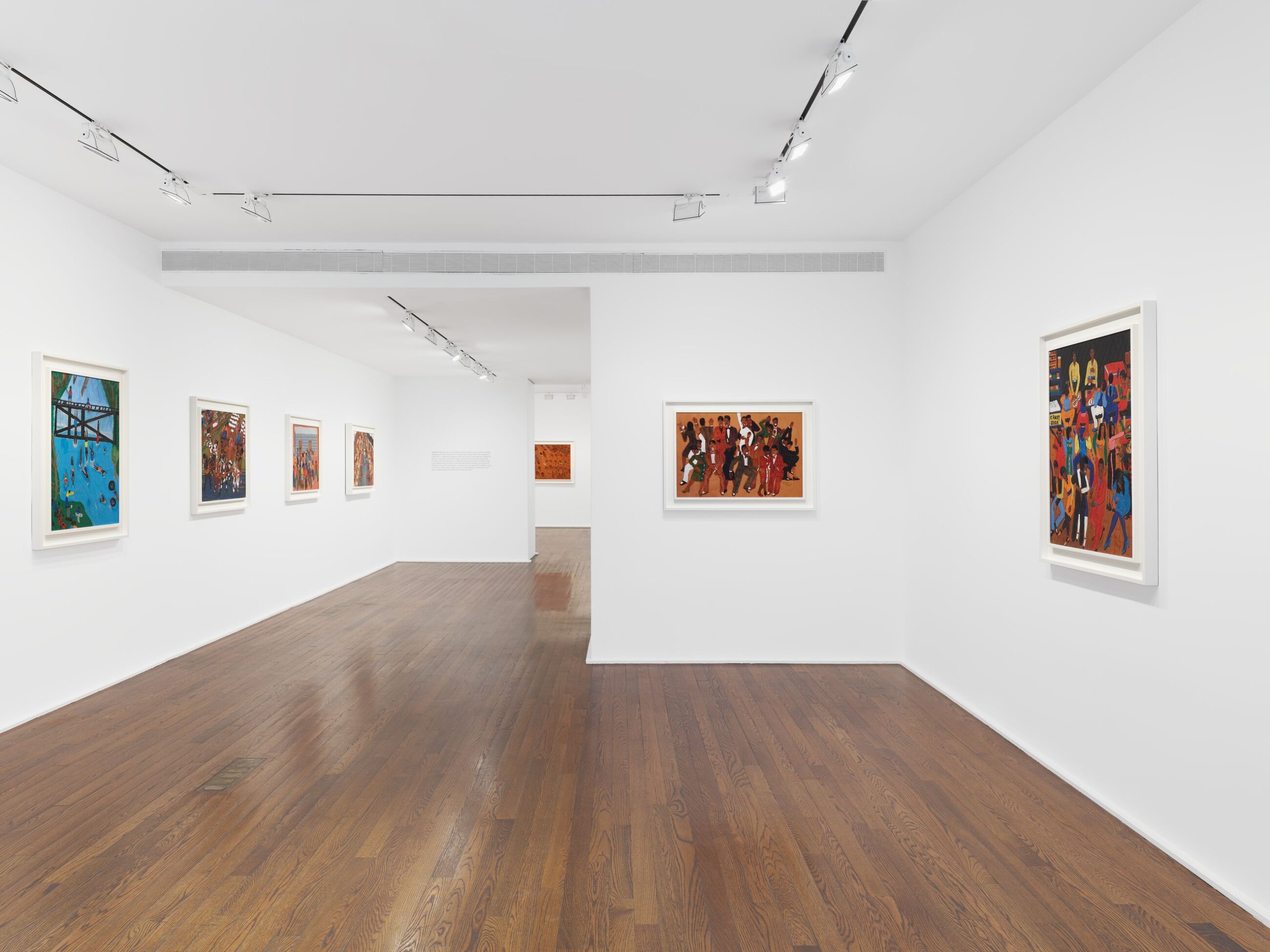
Rembert’s paintings recognize the people and places—from pool halls, juke joints, and civil rights protests, to cotton fields and chain gangs—that shaped his worldview, uniquely rendered through technical mastery of his chosen medium into something arresting and astonishing.
‘Hamilton Avenue was just fantastic. It has a hold on me, even now. Being introduced to Hamilton Avenue was the best thing that’s ever happened in my life. [...] Hamilton Avenue came into my life and made me a different person. I was able to put the cotton field behind me and never go back. I found something that was so different and so good. A lot of good things have happened to me, but it seemed like Hamilton Avenue was the best. Nothing can match it. Nothing. I walked from one world into another when I came out of the cotton field and discovered all those smiling faces, all those people doing well and not picking no cotton.’
—Winfred Rembert
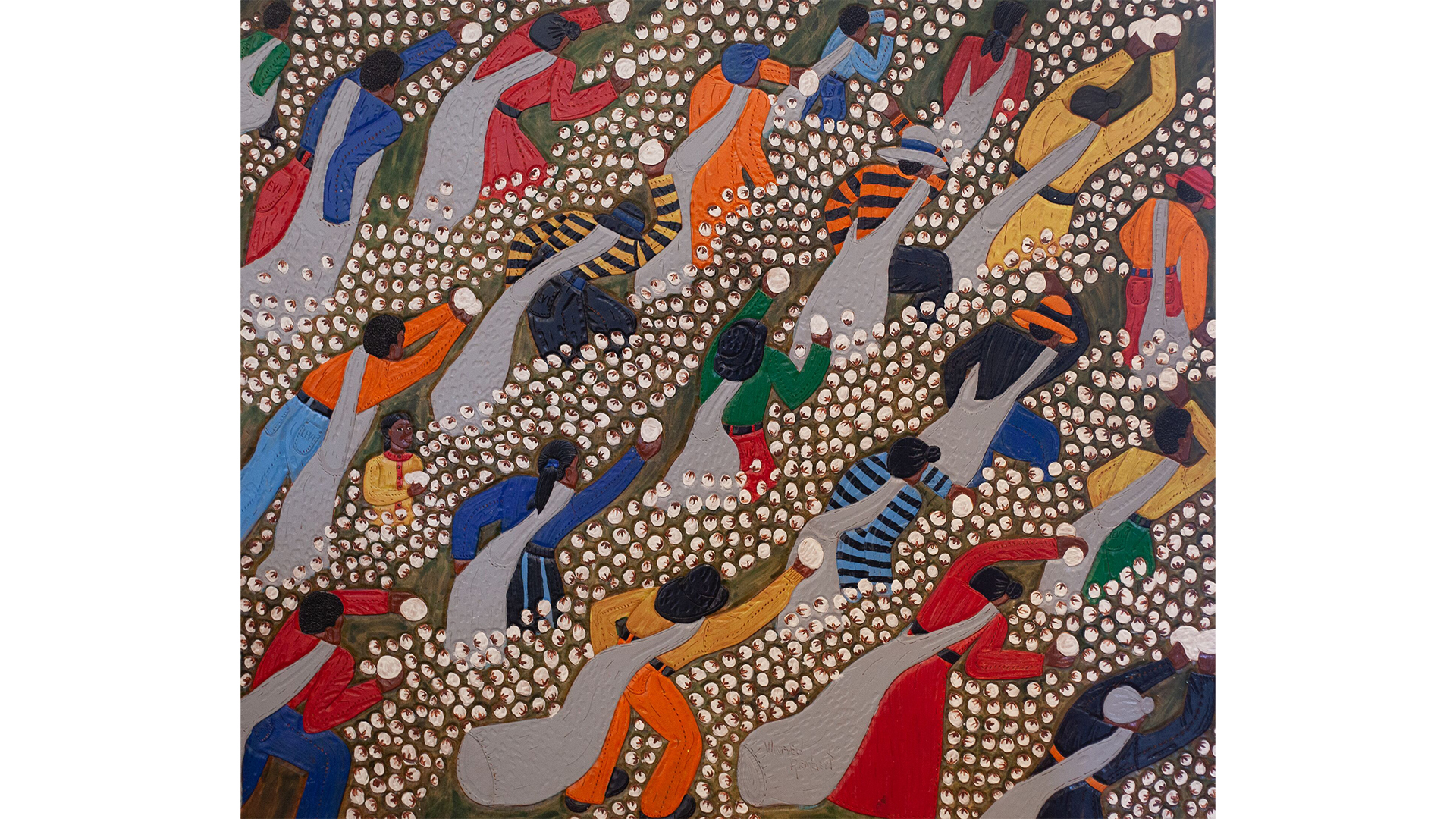
Born in 1945 in Americus, Georgia, Winfred Rembert was a son of the ‘Jim Crow’ American South. In 1965, he was thrown in jail after a Civil Rights demonstration, and two years later survived a near lynching. This pivotal, harrowing experience was followed by seven years in the Georgia prison system. During this time, Rembert was taught how to tool leather from a fellow inmate named ‘T. J. the Tooler,’ who was allowed to create small functional leather items such as wallets. After his release from prison, Rembert moved North, eventually settling in New Haven, Connecticut where he lived for the remainder of his life.
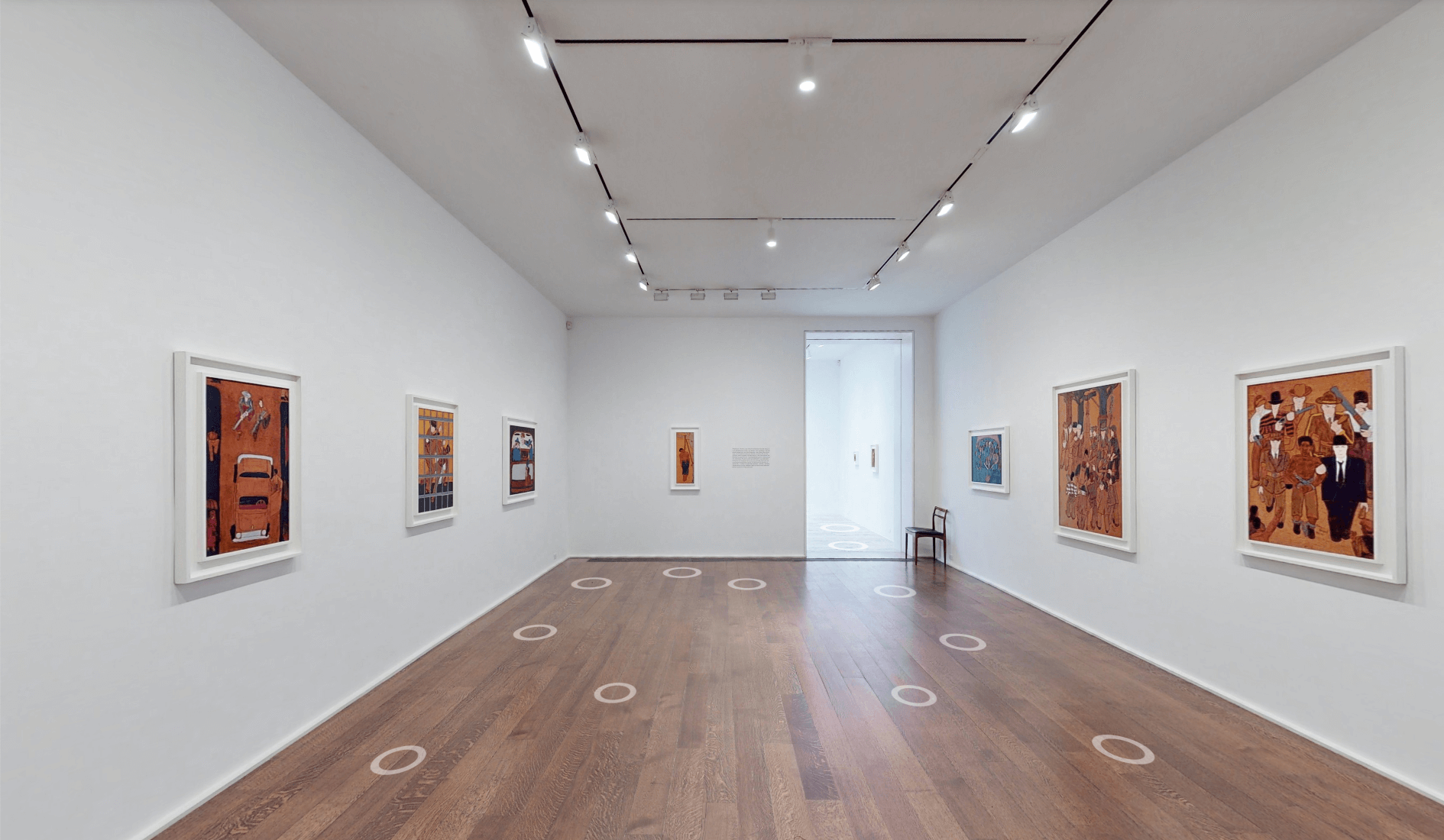
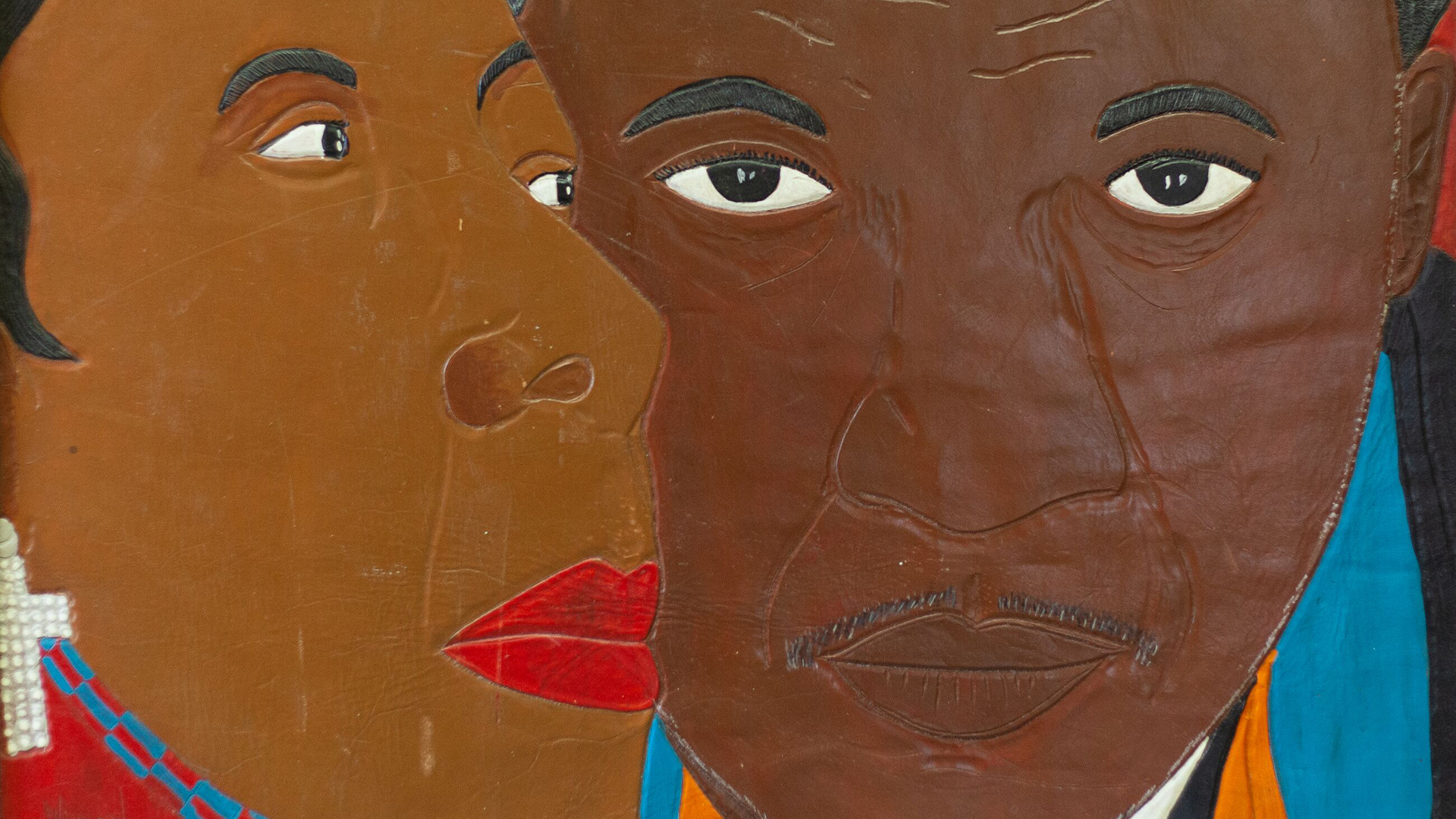
In 1996, at the age of 51, and with encouragement from his wife Patsy, he began to document his memories of life in Georgia in an outpouring of incredible narrative paintings. One section of the exhibition focuses exclusively upon Rembert’s paintings of the women in his life, whose love and companionship shaped his spirit. Rembert’s wife Patsy is affectionately portrayed in the double portrait ‘Patsy and Me’ (2000), a testament to their enduring love and a recognition of Patsy’s unwavering encouragement of his talents, as it was Patsy who encouraged Rembert to begin tooling and painting the story of his life on leather, thereby transforming his pain into redemption.
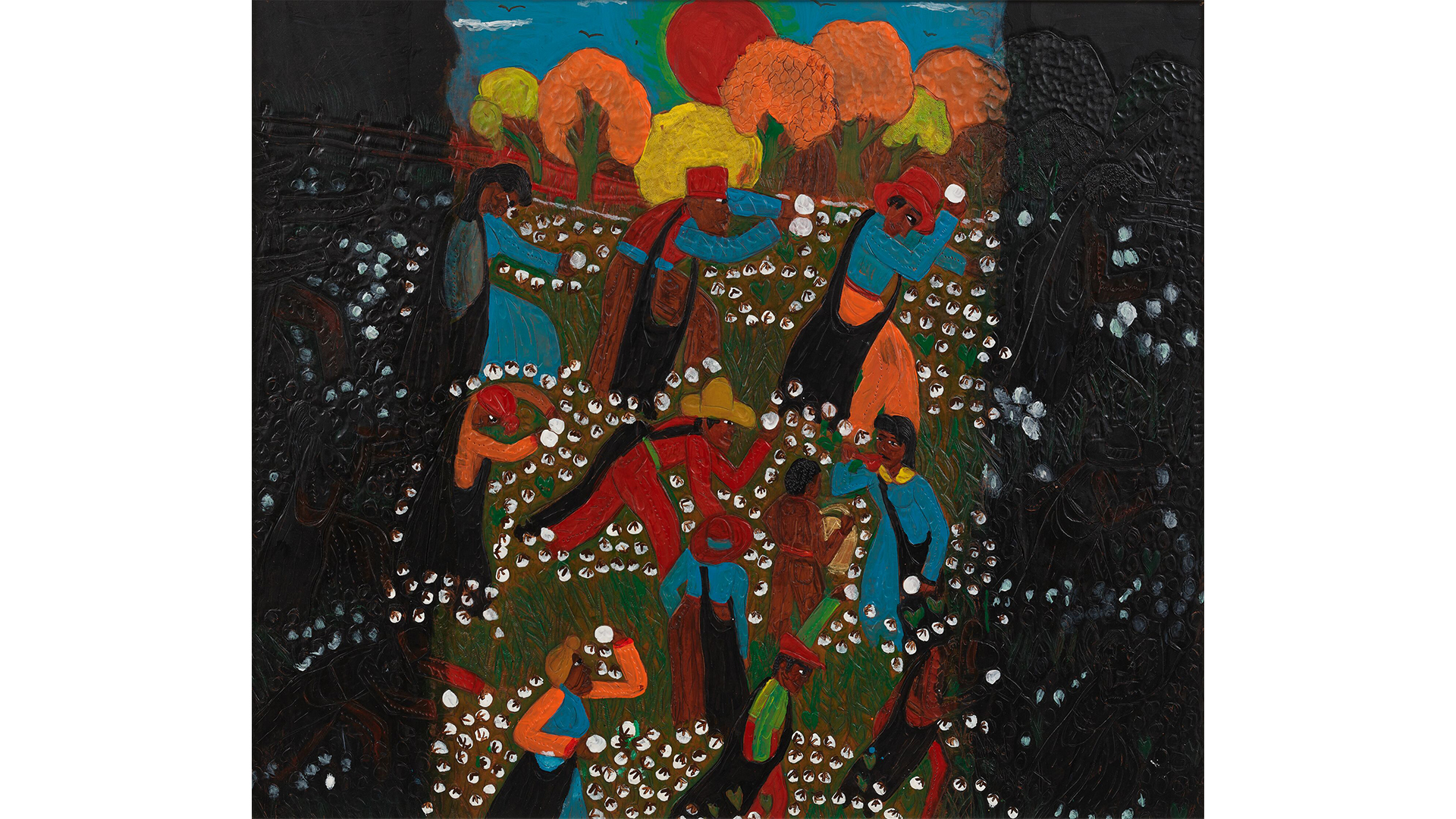
‘Cain’t to Cain’t II’ (2016) is one of many works that evoke the long hours Rembert toiled picking cotton. In this vibrantly colored landscape, workers on the left and right sides of the composition are obscured by dark bands of dye representing dawn and dusk, because as Rembert said, ‘You can’t see when you go, and you can’t see when you come back.’
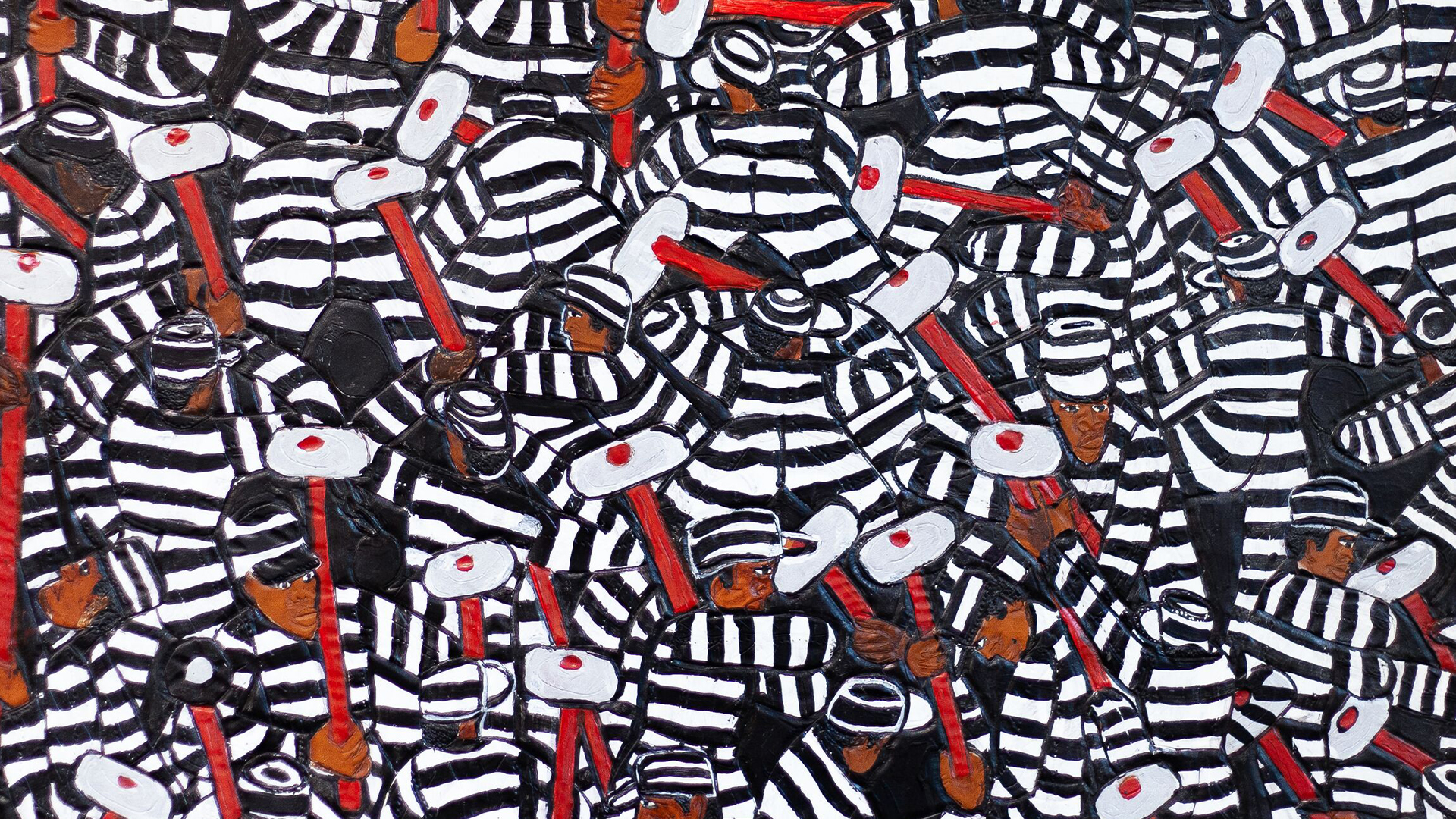
Adjacent to this painting, ‘All of Me’ (Date unknown), is one of the most complex of Rembert’s entire body of work. Recalling his time on a chain gang, this daring work teems with the bent bodies of men in black-and-white striped prison uniforms while working on a chain gang.
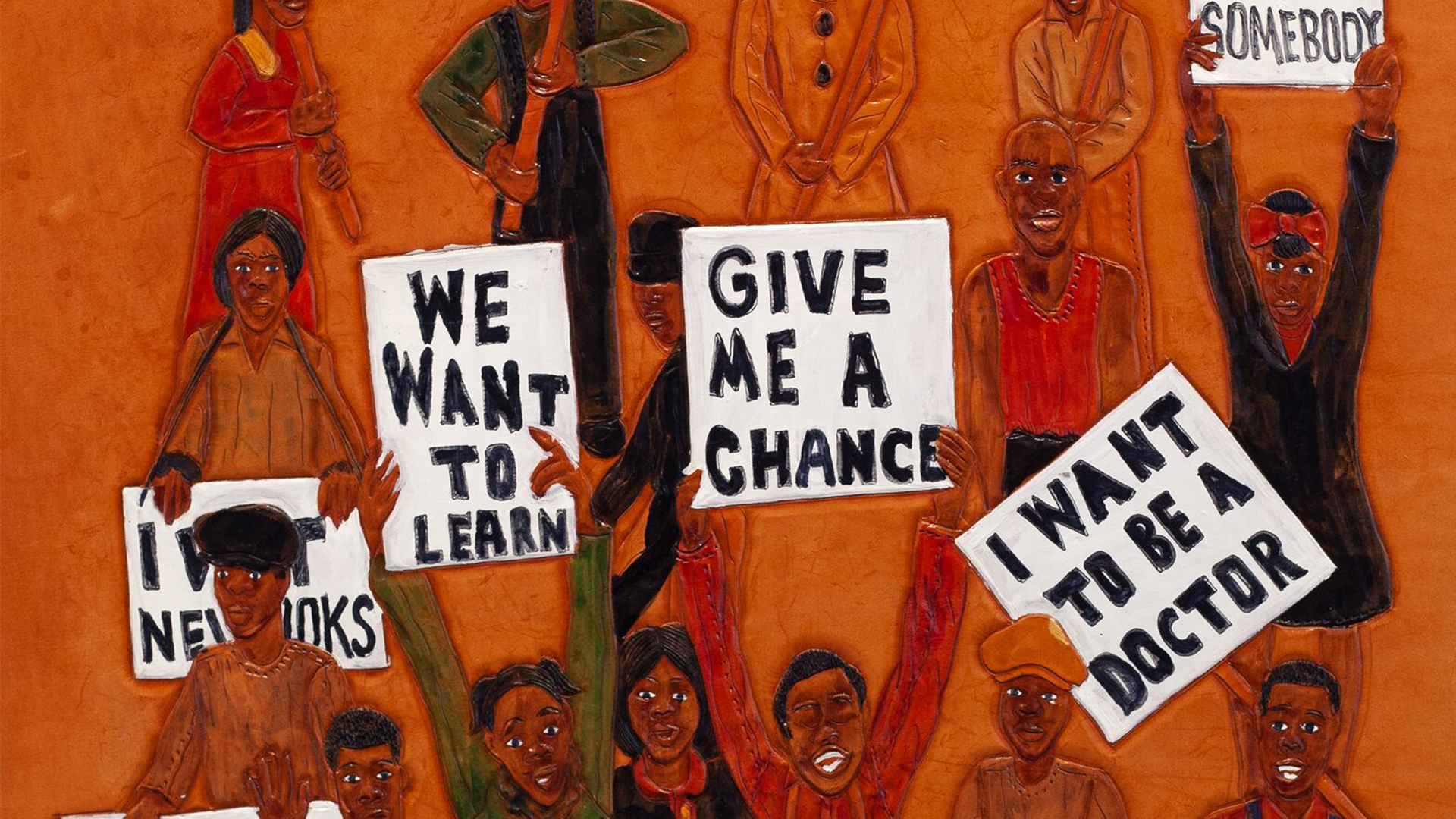
The painting titled ‘Civil Rights – I Have A Dream’ (1999) recounts an experience from 1965, that marked the beginning of the most devastating period of Rembert’s life. Attacked during a peaceful demonstration in Georgia, he fled in a stolen car, only to be arrested and thrown into jail. After a year without charges, Rembert managed to escape, but was caught and put inside the trunk of a police car, a chilling scene that the artist revisited in the work titled, ‘Inside the Trunk’ (2014).
‘Thank God I’m alive, and while I’m still alive I can talk about it. I can talk about surviving. I am history. I am a witness. I can tell about being almost lynched. And when I die, I didn’t die by the rope. I just died from being an old man. I lived my life out. My children, when I’m gone, can read about it, and that picture will be there to speak for me. If you stand and look at it, the picture will talk to you. My great-great- grandchildren can walk up to that picture a hundred years from now and say, ‘That was my great-great- grandfather. He did this picture and the story is about him.’ If I didn’t survive that lynching, I wouldn’t be here. There’d be no picture, no book—and no one to tell or read the things I’ve lived through and seen.’
—Winfred Rembert
About the Artist
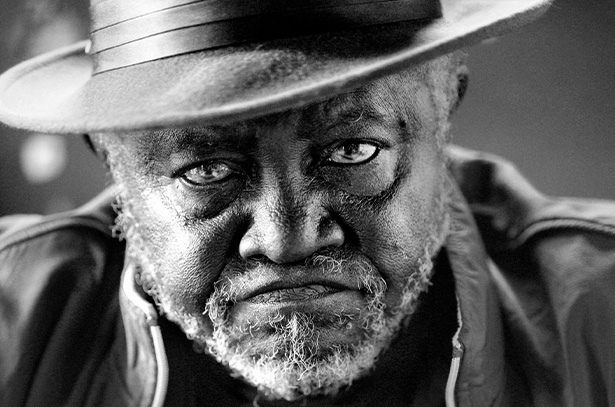
Winfred Rembert
Winfred Rembert (1945 – 2021) was born in Americus, Georgia and grew up in nearby Cuthbert, a rural railroad town located in the southwest region of the state, once at the center of the Deep South’s plantation economy. Living in Cuthbert during the era of Jim Crow, Rembert was exposed...
Inquire about available works by Winfred Rembert
On view now through 22 April 2023 at Hauser & Wirth New York 69th Street.
Related Content
Current Exhibitions
1 / 9
